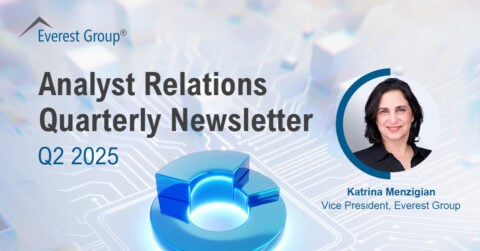
Did you see the news earlier this week about the Avon – SAP relationship in Canada? The eye-grabbing headline, “Avon halts work on big SAP implementation, cites lack of ROI,” thrusts the deal to the attention of both service providers and enterprises planning or in the midst of business transformation deals. The services industry has decades of piercingly clear evidence that large-scale implementations can be problematic and disruptive, and Avon stated that its decision to halt the further roll-out was to stop further disruption to its business. But I believe we can conclude much more than that from this news. In short, this action by Avon suggests that a good deal of change is happening in the services market.
In uncovering what is behind the headlines in the Avon – SAP relationship, let’s start with the fact that both Avon and SAP affirmed that the products company will continue using the SAP system in Canada, the system is working as designed, and their relationship “remains solid.” And they had experienced an earlier successful pilot of the project. So what sparked this recent decision to end the full-scale implementation?
As the saying goes, often what you don’t know will cost you. Here’s what you need to know about this deal.
We see this as a shining example of a phenomenon we are observing in the marketplace. The SAP implementation was part of a broad-based business transformation Avon was trying to drive. But in today’s market companies now are skewing away from the $100 million-plus or large-scale ERP implementations and instead look to buy outcomes and functionality or capability on as as-needed basis.
Fundamentally companies don’t want to spend hundreds of millions of dollars on transformative IT implementations because it’s too expensive, takes too long, and usually the return isn’t there. However, they still need new functionality or capability for competitive advantage so they can drive their businesses forward. This is where the as-a-service models come in; these models allow them to get the new capability without replacing their entire ERP system.
We see a significant movement in this direction. It manifests itself sometimes by companies asking for outcomes. (“We need these results.” “Just give us the insight from the analytics.” “Give us this new market access.” “Allow our retail business to deal with stock-outs.”) They are willing to pay good money for these capabilities, but they want to pay for it in this manner:
- On a consumption basis, paying for it as they use it
- In a phased adoption or in incremental phases where they experiment with it and then drive more into it in subsequent phases
- As a way to avoid buying huge server farms and signing up for licenses, many of which they don’t use
- As a tactic for loosely coupling the solution with their existing ERP or IT systems.
We find that the as-a-service models open opportunities for a different kind of sale. It allows a new breed of vendor or new breed of offering to get the customer out of the complexity of buying the component parts of a solution and focuses purely on the outcome of what the company is trying to accomplish.
Avon is happy with its existing ERP vendor, SAP; but it no longer wants the cost and time of the large-scale transformation project and replacement of its ERP system. We see the Avon decision as important.
Buyer and providers, take note: Avon’s action heralds a new set of industry offers that allow organizations to buy parts of ERP as a service and layer it on top of existing ERP implementations. How will the as-a-service models impact your business?
Photo credit: Marlon Malabanan










